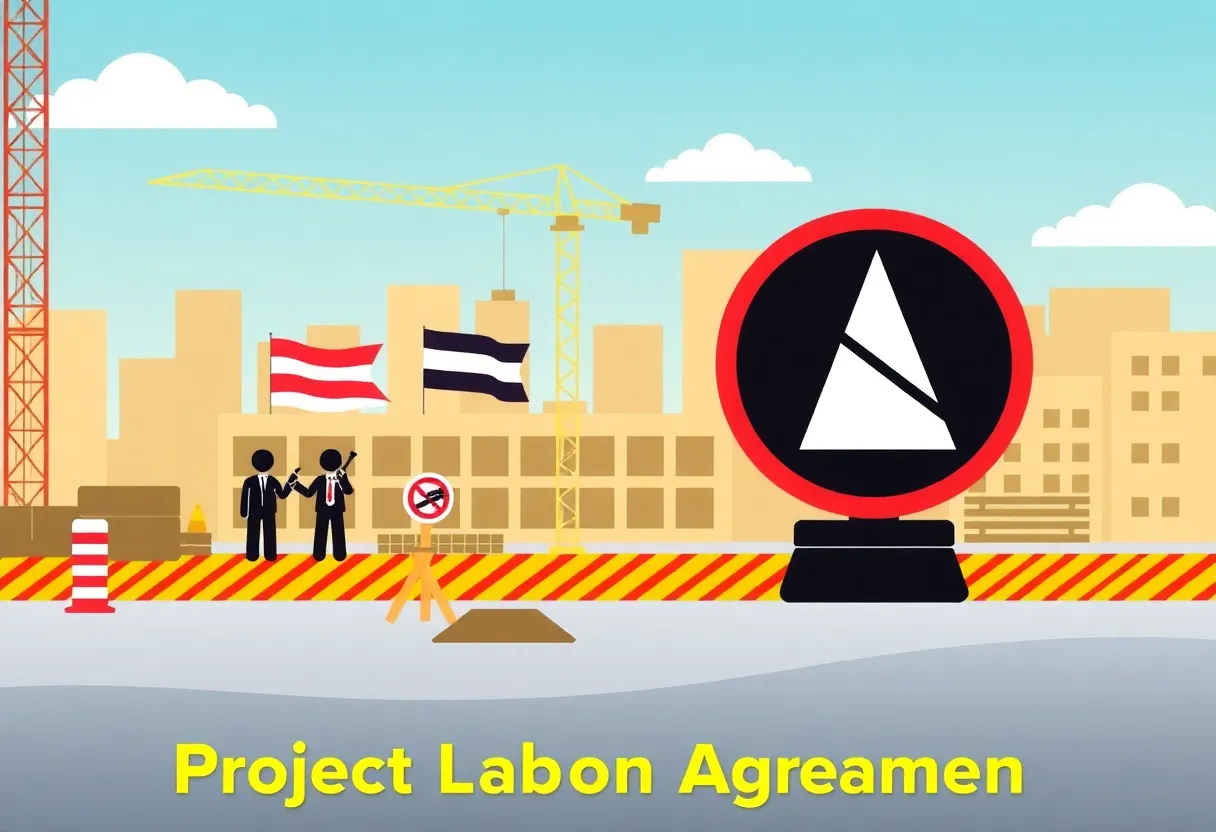News Summary
Project Labor Agreements (PLAs) are under scrutiny as the Biden administration mandates them for federal construction projects exceeding $35 million. Critics argue that these agreements hinder non-union contractors, affecting competitive bidding. Ongoing legal challenges in the 11th Circuit Court question the legality of the PLAs, with varying state support complicating the hiring process and potentially impacting workforce diversity. The future of PLAs and their implications for the construction industry remain uncertain as stakeholders monitor the evolving legal landscape.
Legal Challenges Arise Over Project Labor Agreements in Biden Administration
Controversy surrounds the requirement of Project Labor Agreements (PLAs) for federal construction projects exceeding $35 million. The Biden administration established this rule through an executive order, which was subsequently integrated into federal regulations. Under this guideline, all contractors are obligated to adhere to union collective bargaining agreements, potentially altering the landscape of competitive bidding on such projects.
Impact on Competitive Bidding
PLAs mandate that all workers on a federal project must be union-affiliated. This stipulation has significant implications for the competitive bidding process, as it restricts bids to companies that agree to the PLA terms. Critics assert that this requirement hinders competition, effectively shutting out non-union contractors and their skilled workforce from participating in federal contracts.
Many non-union workers may find themselves at a disadvantage due to these regulations. They are often excluded from the benefits outlined in PLAs, such as pension vesting, and may also face requirements to pay union dues as well as utilize union hiring halls for employment opportunities. This creates a barrier for non-union workers, who might otherwise provide competitive pricing and specialized skills for a project.
State Variations on PLA Regulations
The legality and acceptance of PLAs vary significantly across the United States. Some states have banned government-mandated PLAs, while others actively support them. This patchwork of regulations contributes to the growing uncertainty surrounding the future of PLAs in federal construction projects.
Ongoing Legal Disputes
Currently, the 11th Circuit Court of Appeals is reviewing legal challenges against the recent PLA regulations enacted by the Biden administration. The National Right to Work Foundation has filed an amicus brief in support of these legal battles. They argue that the PLA requirement infringes upon the First Amendment rights of workers and contravenes the National Labor Relations Act.
While a district court previously suggested that the PLA requirement is likely illegal, it abstained from blocking its enforcement pending further evaluation. This leaves contractors and federal agencies navigating through a complex regulatory environment filled with ambiguities.
Challenges in Contract Awarding
The push for enforcing the PLA requirement has caused difficulties for agencies attempting to award contracts. A prior ruling invalidated efforts to remove PLA obligations in specific scenarios, complicating the bidding process further. Additionally, a recent federal court decision favored contractors who challenged the PLA mandate, recognizing that it restricts competitive bidding and raises project costs.
History of PLA Guidance Under Previous Administrations
The debate over PLAs is not new; during the Trump administration, guidance promoting the use of PLAs was issued, although this approach faced backlash from industry groups who contended that such agreements inflate project costs unnecessarily.
Conflicting Studies on PLA Effectiveness
Amidst the ongoing debate, a study from Illinois suggested that PLAs may actually enhance competition and reduce overall project costs, drawing on data from public construction initiatives. This finding contrasts sharply with the stance of PLA critics, who emphasize the need for a more open bidding environment.
Future of Project Labor Agreements
As litigation continues and guidance from the White House evolves, the future of Project Labor Agreements remains in flux. Stakeholders, including contractors and workers across the country, are closely watching how these developments will play out, with possible implications for federal construction projects and labor relations as a whole.
Deeper Dive: News & Info About This Topic
Additional Resources
- Federal News Network: PLAs and Federal Construction Projects
- ENR: Trump Administration and Project Labor Agreements
- Capitol News Illinois: PLAs Lower Costs and Boost Competition
- ECMWeb: Affirmation of Federal PLA Rule
- Encyclopedia Britannica: Project Labor Agreements
Author: Construction CA News
The CALIFORNIA STAFF WRITER represents the experienced team at constructioncanews.com, your go-to source for actionable local news and information in California and beyond. Specializing in "news you can use," we cover essential topics like product reviews for personal and business needs, local business directories, politics, real estate trends, neighborhood insights, and state news affecting the area—with deep expertise drawn from years of dedicated reporting and strong community input, including local press releases and business updates. We deliver top reporting on high-value events such as the Rose Parade, Coachella, Comic-Con, and the California State Fair. Our coverage extends to key organizations like the California Building Industry Association and Associated General Contractors of California, plus leading businesses in technology and entertainment that power the local economy such as Apple and Alphabet. As part of the broader network, including constructionnynews.com, constructiontxnews.com, and constructionflnews.com, we provide comprehensive, credible insights into the dynamic landscape across multiple states.




